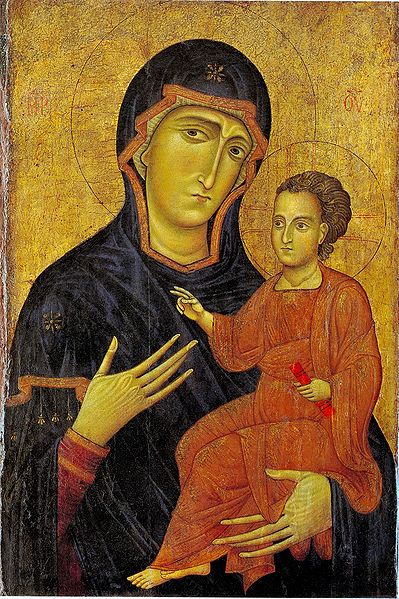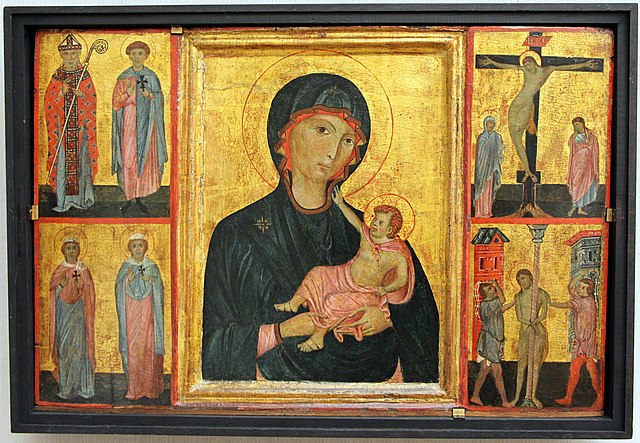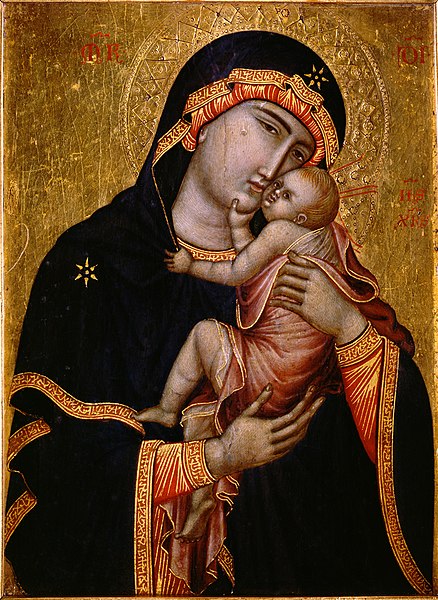Italo-Byzantine is a style term in art history, mostly used for medieval paintings produced in Italy under heavy influence from Byzantine art. It initially covers religious paintings copying or imitating the standard Byzantine icon types, but painted by artists without a training in Byzantine techniques. These are versions of Byzantine icons, most of the Madonna and Child, but also of other subjects; essentially they introduced the relatively small portable painting with a frame to Western Europe. Very often they are on a gold ground. It was the dominant style in Italian painting until the end of the 13th century, when Cimabue and Giotto began to take Italian, or at least Florentine, painting into new territory. But the style continued until the 15th century and beyond in some areas and contexts.
Madonna and Child, Berlinghiero, c. 1230, tempera on wood, with gold ground, Metropolitan Museum of Art.
Madonna and Child, with Annunciation, Flagellation & Crucifixion, mid-13th century
Late 13th-century triptych, probably by Grifo di Tancredi
The Cambrai Madonna, Italian, c. 1340. Tempera on cedar panel. 35.7 cm x 25.7 cm. Now Cambrai Cathedral, France.
Gold ground or gold-ground (adjective) is a term in art history for a style of images with all or most of the background in a solid gold colour. Historically, real gold leaf has normally been used, giving a luxurious appearance. The style has been used in several periods and places, but is especially associated with Byzantine and medieval art in mosaic, illuminated manuscripts and panel paintings, where it was for many centuries the dominant style for some types of images, such as icons. For three-dimensional objects, the term is gilded or gold-plated.
Crucifixion by Orcagna, c. 1365, with very elaborate tooling. Fragments from an altarpiece, in a 19th-century rearrangement.
Christ and archangels mosaic, Sant'Apollinare Nuovo, Ravenna, 7th-century with later restoration
The Wilton Diptych; c. 1395–1399; each panel is 53 x 37 cm.
Both panels are tooled, with different patterns.








